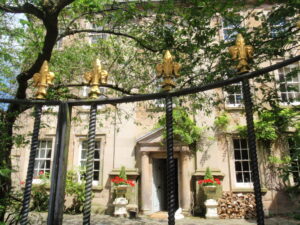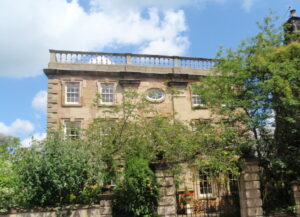Winster Hall, built by Francis Moore in 1628, is the most important house on the north side of the main street. The Moore family rose from yeoman status in the 17th century to that of gentleman by about 1720, when they rebuilt the Hall. It became an inn in the 1970’s but has now reverted to being a private dwelling. Winster Hall is three-storeyed, with all the trappings; rusticated quoins and a cornice topped by a parapet, complete with a balustrade. The windows are sliding sashes set in stone frames, with keystones and there is a roundel in the centre front and a good doorway with columns either side, surmounted by an entablature. The Hall stands back from the main street behind a sturdy pair of gate piers. Gritstone, for the construction of the Hall was brought by pack-horses from the Stancliffe Quarries in Darley Dale. The Hall was, for a time, the home of Llewellyn Jewitt, a 19th century antiquary, whose grave can be found in the churchyard. Jewitt was a skilled engraver. He illustrated a famous book on architecture, wrote books on ceramic art, “A History of Derbyshire”, and many stories and ballads of the county. He was also a practical man and assisted in an enterprise to bring pure water to Winster. Residents ‘helped most nobly with their labour’ to lay the three-mile pipeline. Almost £1,000 was raised and eight public taps were erected in the village.


